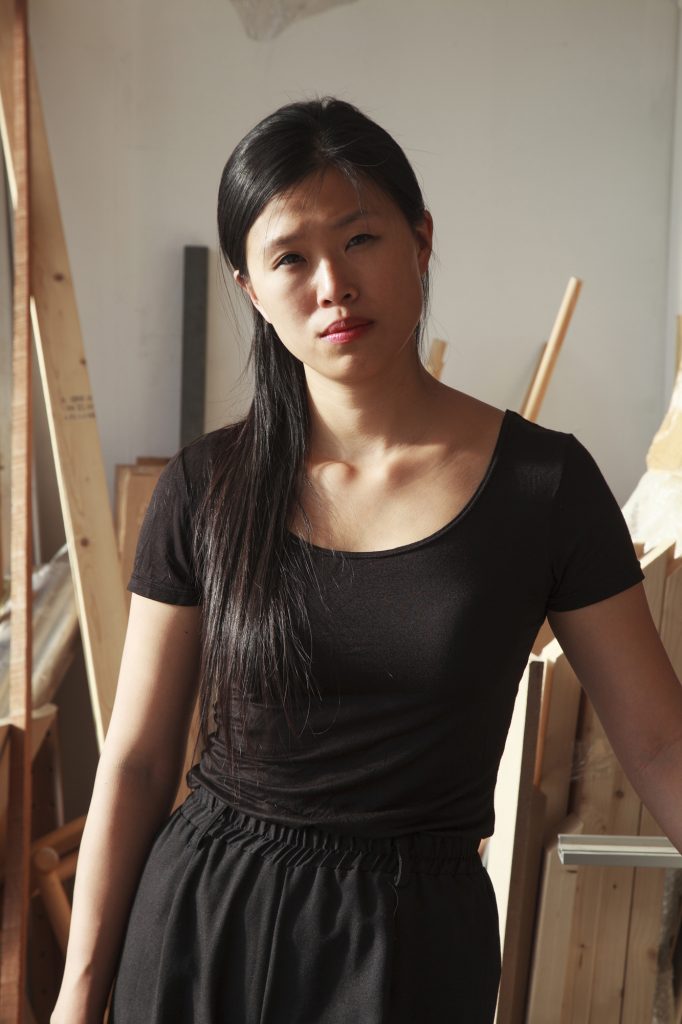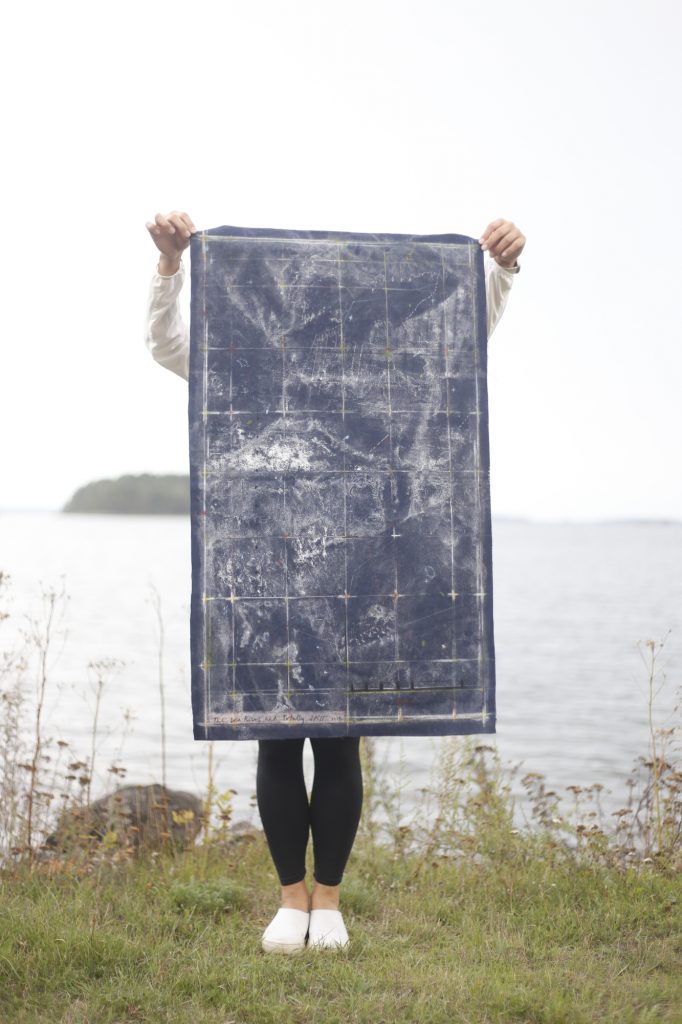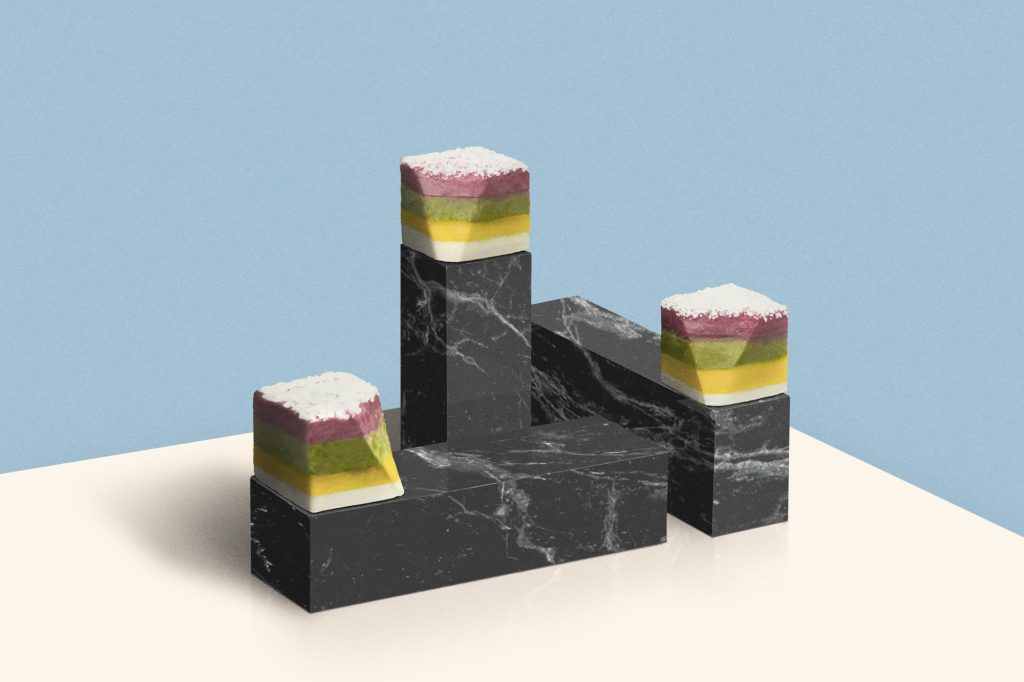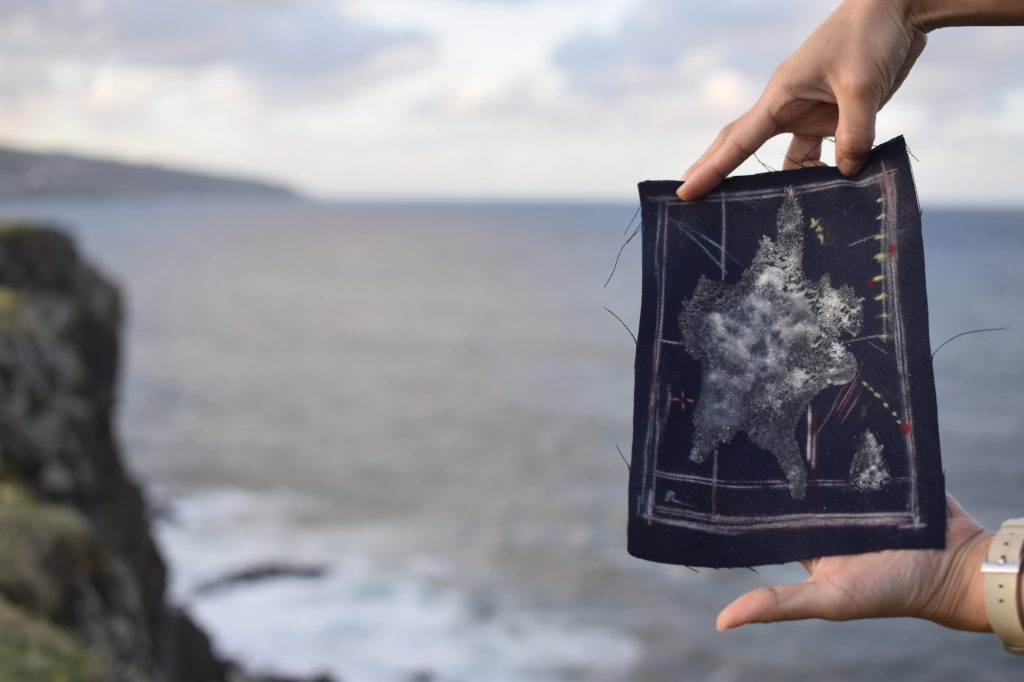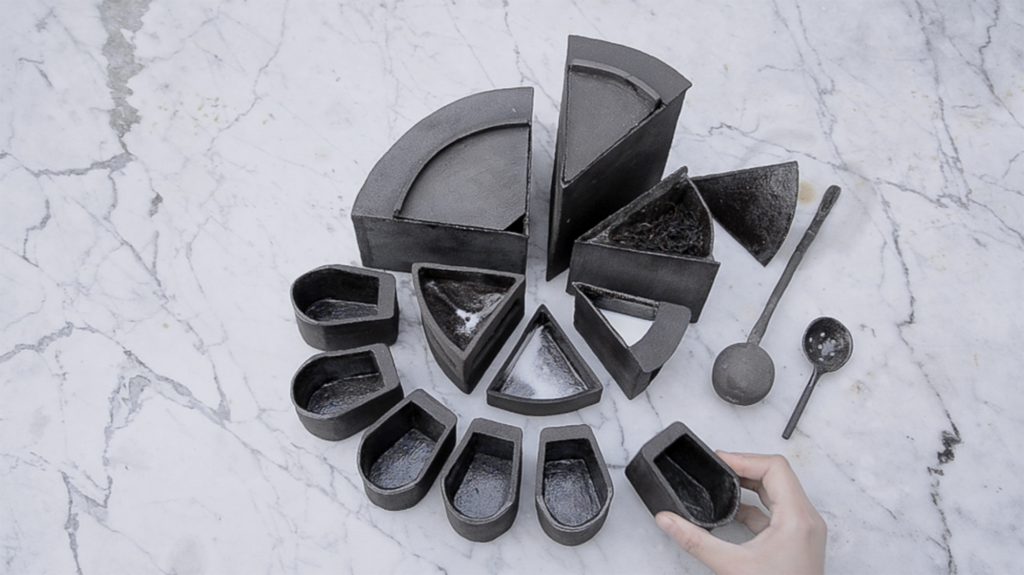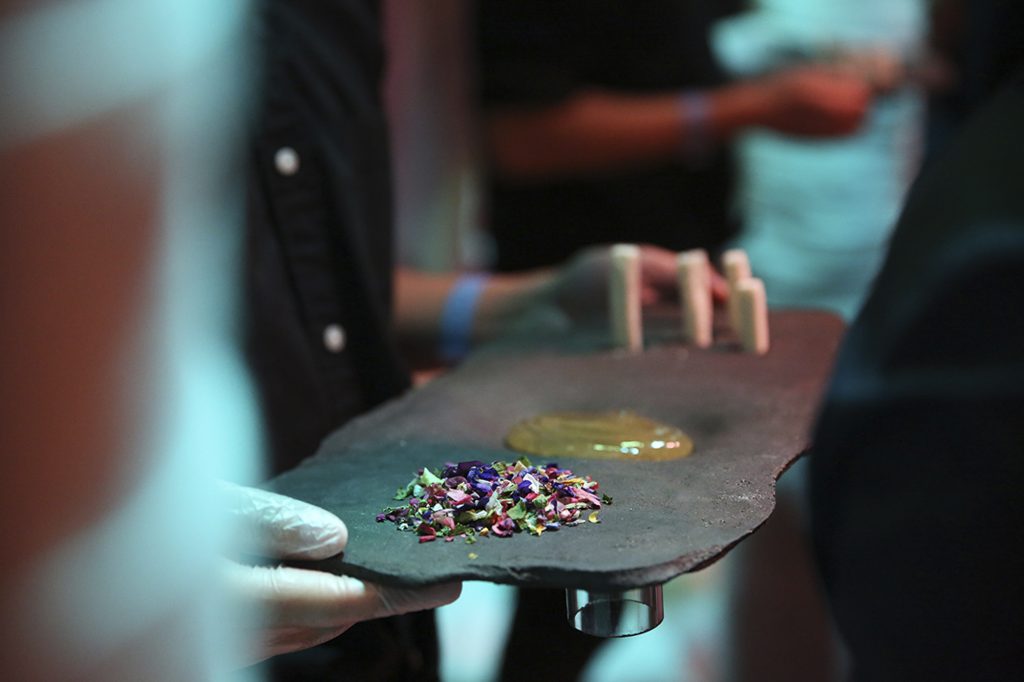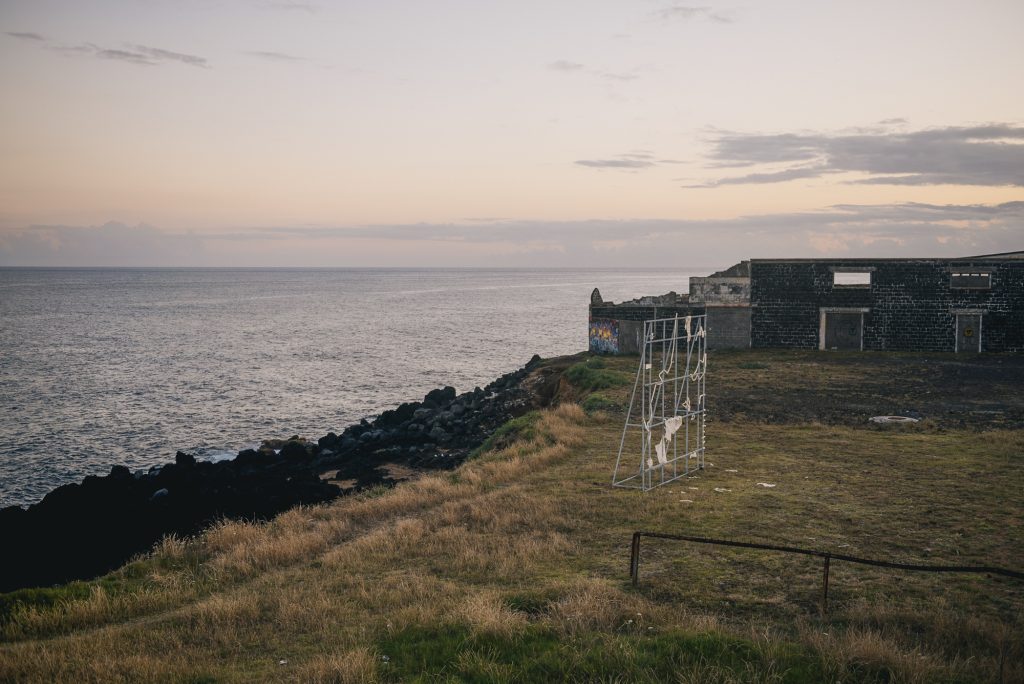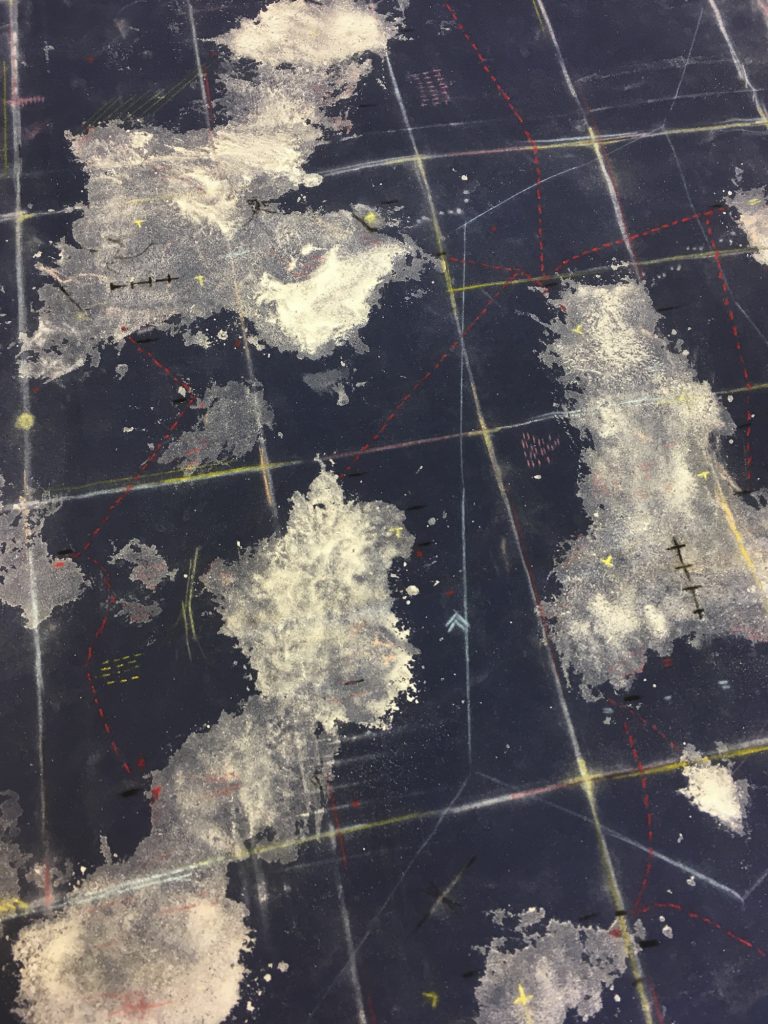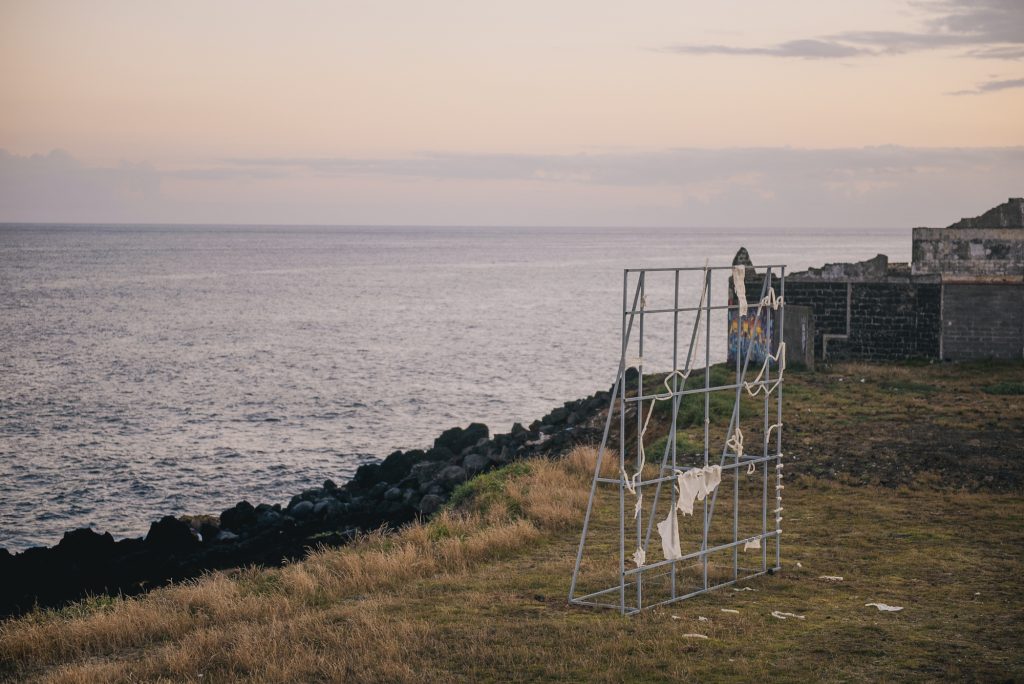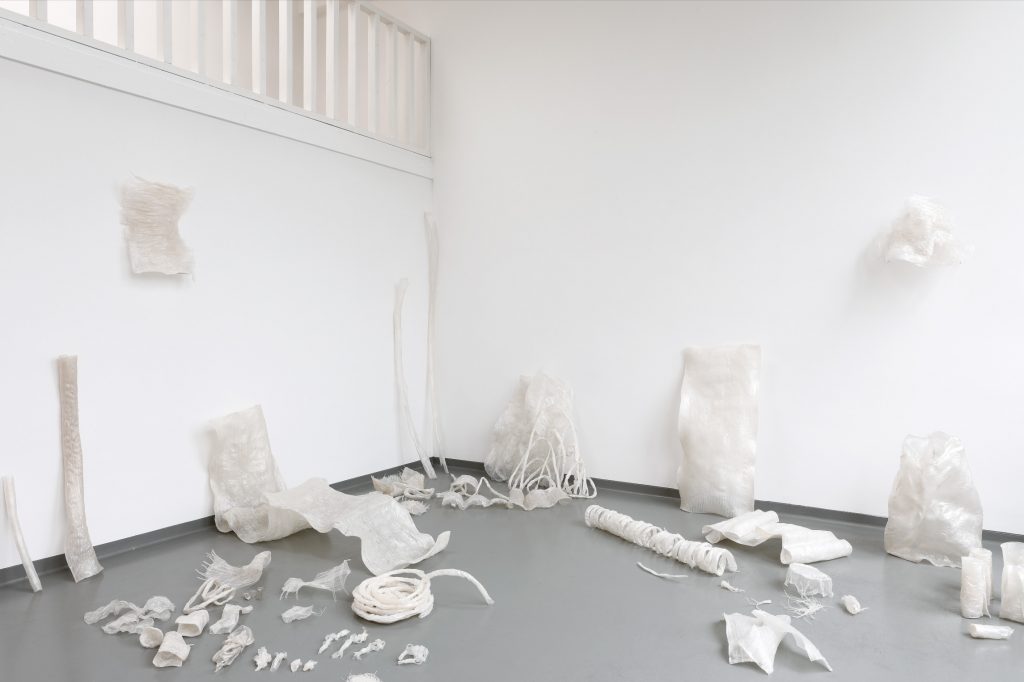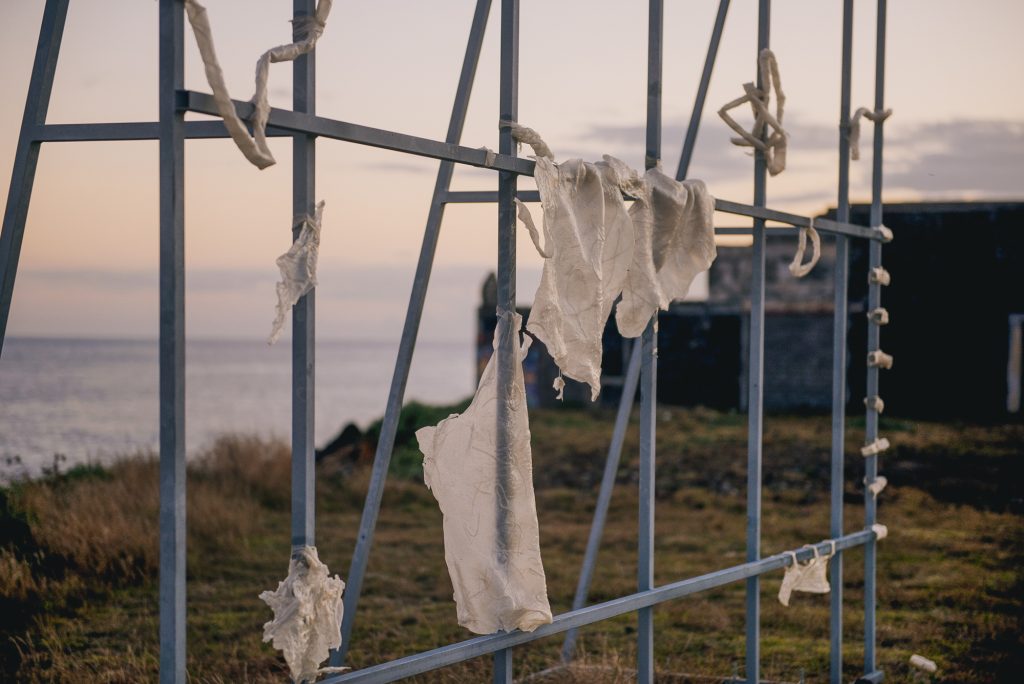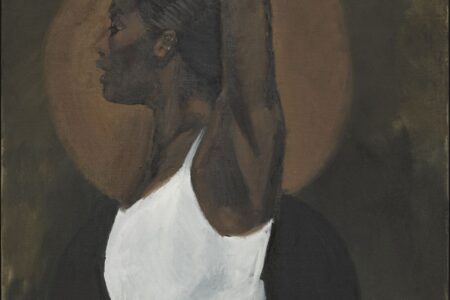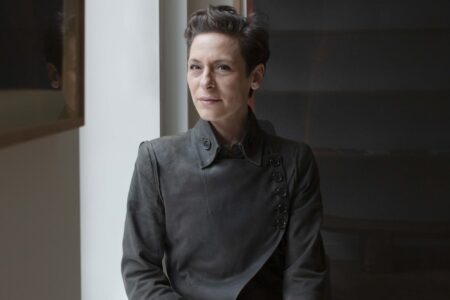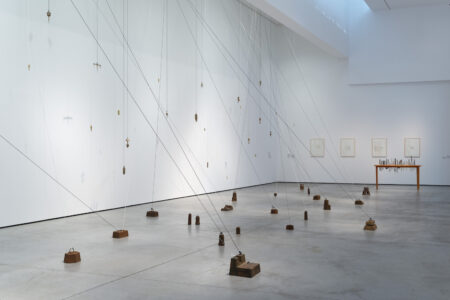Rain Wu: To Appear and Disappear with Lightness
What truths do maps truly convey about our place in the world? Continuing her methodological focus on sustainability and temporality, the newest series of works by British-Taiwanese artist Rain Wu allows us to re-imagine our relationship with these cultural artefacts.
Drawing inspiration and knowledge from academic and scientific fields beyond art and design, the conceptually driven works of British-Taiwanese artist Rain Wu aim to re-imagine our own manifold relationships with nature. Whether it be through drawing, sculpture, food performance or architectural installations, her practice offers us a chance to question the intentions behind the systems that dictate our lives and/or reimagine our traditions and environments — a reflection that is much needed in the turbulent times we live in. Her most recent series, ‘The Sea Rises and Totally Still‘, is a series of maps drawn on stretches of blue fabric with seawater and chalk — as they’re exposed to the open air, the lines fade away to reveal the instability and fictions that are drawn into maps as we know them today. TLmag spoke to Rain to learn more about the inspirations behind this work, how it fits into her larger practice of using perishable materials and how she sees art and design contributing a positive change in today’s political and environmental climate.
TLmag: Over the years you’ve made work based in Taiwan, Brussels (BE), Maastricht (NL), London (UK) and now also in Azores (PT) and Dalsbruk (FI). How have your experiences of being situated and a part of so many different places translated into your extensive practice?
Rain Wu (RW): I’m interested in different cultures, traditions and stories of a place and my work often has a site-orientated approach: my works “Eataipei” and “Eatopia” are about Taiwan, “The Tea Set” is about Britain’s socio-political history and “Facsimile of a Breeze” was inspired by the story of a short-lived Volcanic island that only existed as an extraordinary story. Having lived in London for 17 years, I love that my work takes me to different places to visit and to live. Being foreign keeps me stimulated and on the edge with a critical eye open. I am recently fascinated by the idea of living ‘micro-retirements’ throughout our lives. We shouldn’t count days till the day we turn 65 to do all the things we want to do, we start now — and that’s what I am trying to do right now: I’m finding a way to solely work on the things and places that interest me.
TLmag: Your most recent projects, “Facsimile of a Breeze” and “The Sea Rises and Totally Still”, both illustrate one of your main interests at the moment: mapping. When did you first become interested in this?
RW: Perhaps my initial interest in mapping comes from my architectural background, where for years I was taught about the importance of rooting projects to a place. I love how maps are constructs to different realities: an essential part of world-building, even though it only takes a few formalities (grid, geometry, styles) to give them their authority. Yet, there is more imagination than there are facts on a map. As cultural artefacts, they consist of layers upon layers of human desire, imagination and expectation, these sediments deposited are revealing of our collective history. Between the neat distances measured by techno-scientific means, maps host an uncanny object — or as Dennis Wood would say: ‘the invisible, the unattainable, the erasable from the world’.
The majority of maps in existence today have emerged from the ‘Age of Explorations’, consisting of17th Century nautical charts and cartographic representations of natural resources in colonised lands. The subjectivity of its creators is evident under the map’s mask of ‘scientific correctness’, however, maps bridge between absence and presence, and between the complexity of the actual land and its intentional simplifications. Jean Baudrillard’s concept of Hyperreality, which talks about how representations can erase a place entirely, has been a powerful thought to understand how representations (maps) and their original objects (place) have a mutual influence on one another.
TLmag: Using perishable materials like seawater and chalk, ‘The Sea Rises and Totally Still’s paintings aim to ‘reconciliate’ the materials on the map with their surroundings. The use of unstable materials like these seem like a natural extension of your previous works surrounding food sculptures. What insights have these substances given you throughout your practice?
RW: When I first exhibited ‘The Sea Rises and Totally Still’ outdoors on an archipelago in Finland in 2019, the morning dew dissolved the painting into brine, until the sun came out to evaporated the moistures to return its original state. The minor disfiguration in this process is part of the work, so are the changing states and they’re instability. Over the last few years, I have intentionally been making artworks with perishable materials to investigate other carriers of knowledge, experience and meanings. The starting point was food – which I used as a sculptural medium, a story-telling device and a common ground to engage the audience in a more visceral way. Working with perishable materials has given me insights to examine different forms of disappearance- be digested, decomposed, dissolved, dispersed, degenerated, decayed, deprived, deconstructed, destroyed and so on…
Joseph Brodsky talks about how absence provides us space for imagination, writing that ‘the more invisible something is / the more certain it has been around.’. In that sense, disappearance is not something to fear but to learn from. Bringing it back to working with materials that would not outlast us, through using these materials we could be reminded of our own temporality and fragility, in turn developing sustainable forms of stability in care and empathy for a future collective self.
TLmag: Each seawater drawing features a fictitious place, yet they still follow the recognisable templates, making them seem like real places. How intuitive was this process of creating imagined places?
RW: I think of maps as semi-fictional objects because they isolate traits of the world to such simplified dimensions. It’s also in this definition that I find the freedom in creating fictitious contents within them. In our constructed world, map- making has gone from ‘the invisible, the unattainable, the erasable from the world’ (Denis Wood) to forms of manifestation. Throughout the process, I’ve been inspired by the ‘map stories’ that exists between the literary, artistic and philosophical praxis, like Jorge Luis Borges’ ‘On Exactitude in Science’ which talked about the creation of the most accurate map, creating a second layer of reality to an existing city — and Lewis Carroll’s blank Ocean-Chart in The Hunting of the Snark.
TLmag: How do you see the research going from here?
RW: Maps are fascinating cases of the Western ‘paper-tradition’, so I want to further my research by looking at other parts of the world that exist on different fundamental principles — like the Nomadic Bedouins, the verbal traditions of indigenous peoples, No Man’s Land, conflict zones etc. While our system cannot submit to another fundamental structure of existence, I see the extent of our logics and wonder how we reconcile with people and places around us. Geographer and writer Alistair Bonnett poignantly pointed out: “When the world is fully codified and collated…a sense of loss arises.” Perhaps it’s time we revisit our intentions of map-making.
TLmag: Whether it’s by relearning, unlearning, rethinking, or undoing the gestures and common practices that came before us — how do you think art, design and the poetics that can be found in both of them, can contribute a positive change in today’s political and environmental climate?
RW: I recently came across a definition of ‘sustainability’ laid down by the Brundtland Report in 1987, which states that it is “to meet the needs of the present without compromising the ability of future generations to meet their own needs”. I came to understand the term as empathy towards future generations — not just towards different people and species, but through time: aiming at our future selves. I found this definition of sustainability an all-encompassing one, much in contrast the popular view that that equates sustainability to sacrifice.
Beauty (or the appreciation of it) does a great deal, not only that it relieves us from moments of despair and uncertainty, but it is the means to treasure the world we live in better. Art and poetics always sit outside the realm of practicality, they make people think outside the rigid systems our day-to-day lives are bound in. They give us different channels to imagine the world we live in.My work is very much inspired by Gustav Metzger’s “Auto-Destructive Art”, which brings attention to the potential extinction of our species, and Albert Camus’ “Create Dangerously”, which details how artists have a responsibility to speak for those who cannot. Living in an age of uncertainties, it seems to be more and more important to me that artists become advocates for ideas that perhaps political systems should, but can’t, change.
